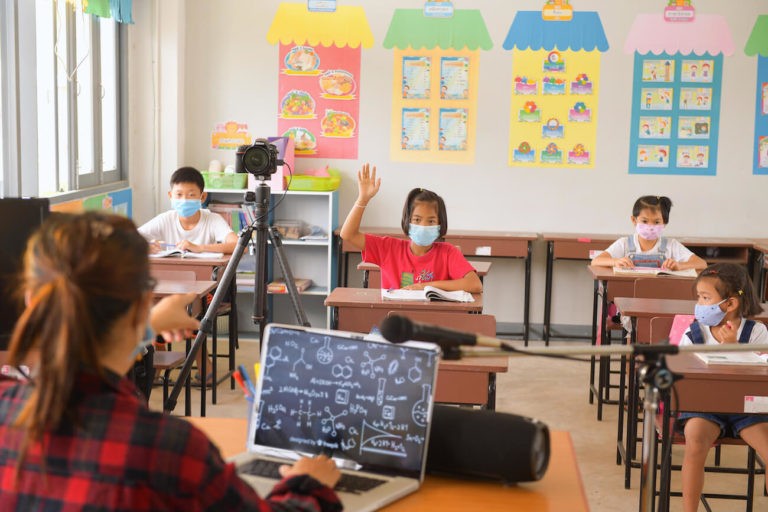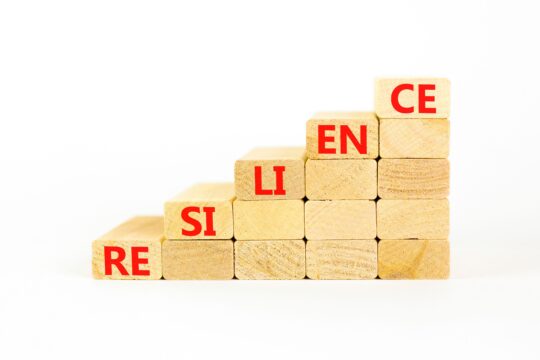Challenges Teachers are Currently Facing
The unprecedented and ongoing circumstances surrounding the COVID-19 pandemic have created a host of challenges across the globe. Specifically, the pandemic has impacted the manner in which citizens interact, work, and go about their daily lives in general. Educators are perhaps one of the subgroups of the general population that have experienced monumental changes that have necessitated continuous adaptations and, on certain levels, systemic redesigning of the instructional process.
Many teachers entered into March of 2020 under the assumption that the COVID-19 pandemic may result in a brief school closure, followed by a rapid return to normalcy in the classroom. Unfortunately, this was not the case, and the hurdles created by the Novel Coronavirus seemingly grow taller on a near-daily basis. While attempting to accomplish the task of educating their students effectively, teachers have been faced with extended school closures, enforcing face covering policies, leaving their classrooms for larger instructional settings capable of accommodating social distancing, transforming their in-person classrooms into virtual learning platforms, and in many instances, attempting to educate two groups of students (in-person and online) simultaneously.
Prior to the onset of the pandemic, a majority of teachers had established repertoires of classroom routines and pedagogical strategies that are germane to direct, in-person instruction. Thus, a substantial learning curve between tried and true instructional methods and teaching within a remote learning environment became apparent, and educators were forced to quickly rethink their methodologies in addition to learning the technical aspects of online learning platforms.
Further complicating matters is the fact that many school districts have decided to present parents and guardians with the options of either sending their children to school in person or choosing to have them learn from their homes within an online platform. This scenario has necessitated a significant number of educators to attempt to instruct students in-person and online simultaneously. Providing quality instruction can be challenging within both the face-to-face and online instructional models. Therefore, combining the two models into single class periods throughout the day has created a situation in which teachers often feel that their work for the day is never complete and has the potential to lead to increased potential for burnout.
Although educating students within both the physical and virtual world is a challenging task, certain steps can be taken to help make the process not only more palatable but also more beneficial both for the instructor and students. Additionally, approaching this challenge from a formulaic and methodical perspective hopefully will serve to reduce possible frustration on the part of teachers and students alike.
Strategies for Teaching In-Person and Remote Learners Concurrently
Manage your time effectively.
Time management is far from a new strategy for educators, but the concept bears repeating in light of the fact that most – if not all – educators working within the present environment are faced with completing more work within the amount of time they are given.
Effective time management certainly applies to the planning process for lessons and activities; however, perhaps more critically, it should be applied to the content being taught within any given lesson. Essentially, teachers should review their unit and lesson plans and identify topics and activities that are not entirely critical in accomplishing the overall goals of their courses. Ancillary items should be eliminated thereby reducing the scope of lessons and units down to those concepts and understandings that are most critical to students’ long-term success.
By paring course content down to the critical concepts, teachers can more easily accomplish the task of instructing students within a dual format. When instructing within in-person and online settings simultaneously, many teachers tend to focus more time and energy upon the students that are physically present within the classroom. This more targeted approach to lesson content expectations will reduce the number of “in the moment” tasks the teacher must complete in order to accomplish the goals of the lesson and allow him or her to be able to divide time between students in the classroom and those working remotely.
Attempt to “go live” with online students as frequently as possible.
The process of online instruction in isolation can result in limited interaction with other students and the instructor for students learning remotely. As a result, if technology is available to enable online students to participate in real-time instruction via online video conferencing applications such as Zoom or Google Meet, instructors should incorporate these methods as frequently as possible.
By using this approach, teachers can communicate with all students – regardless of format – simultaneously, reducing the need to provide instruction and lecture-style presentations at different times. This approach carries with it the added benefit of remote students being able to interact with their peers in the physical classroom through the use of audio and visual technology, which assists in reducing the feelings of isolation that many remote learners have the potential to experience.
Establish in-person and virtual “office hours.”
An effective method for ensuring that students are provided with an opportunity to seek teacher input and guidance is the establishment of “office hours.” Naturally, students that are physically present within a school can stop by a teacher’s classroom or meet with them after class or the school day. Setting aside a time at which they will be available in an online conferencing platform for remote learning students allows teachers to be accessible to students who require additional tutoring or simply to maintain contact with a trusted adult.
When establishing virtual office hours, teachers should attempt to schedule these times within their contracted workday hours. The optimal times in which this can be accomplished are immediately before or after the school day.
Intentionally build “non-school” time into your daily schedule.
As mentioned previously, instructing students within two settings has the potential to lead to rapid educator burnout. Therefore, teachers must identify at least a small window of time in which they can focus on themselves, their families, and other items that are important to them. When simultaneously teaching both in-person and online, educators can easily become entangled in the trap of believing that they must focus on work during every waking moment. While it is critical that educators work to the absolute best of their abilities, this must not come at the expense of their personal mental health and physical wellbeing.




